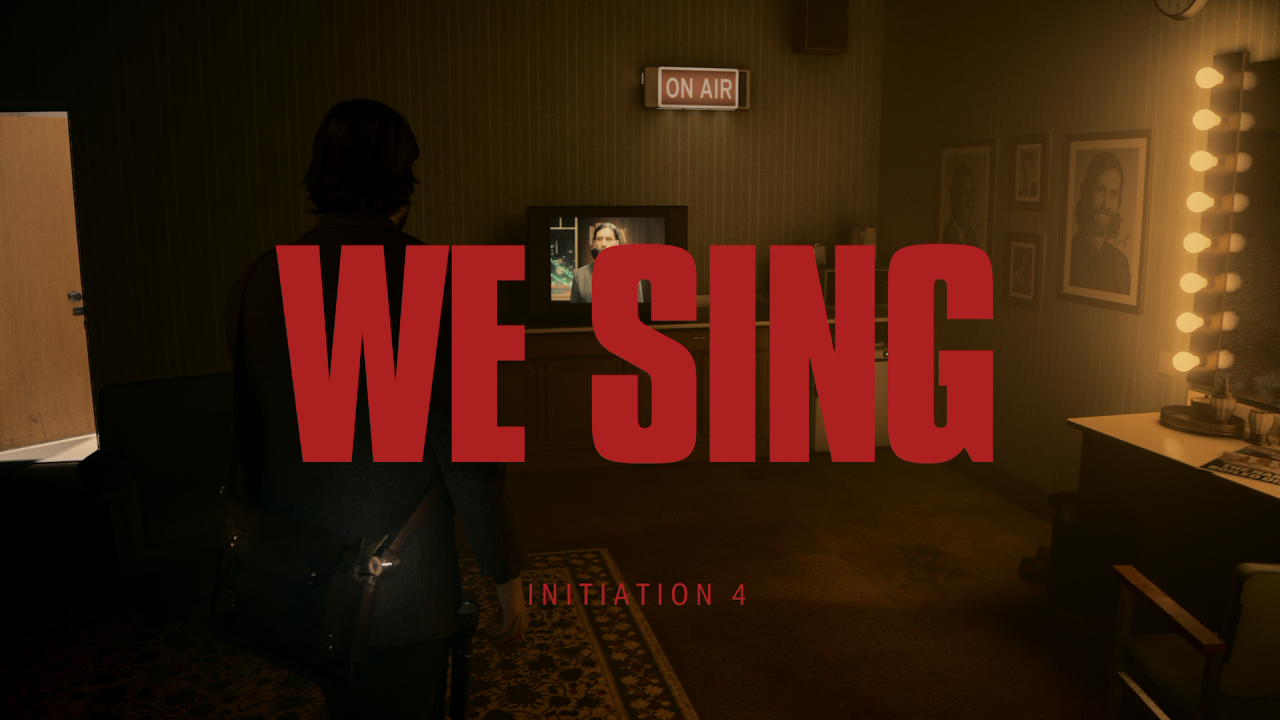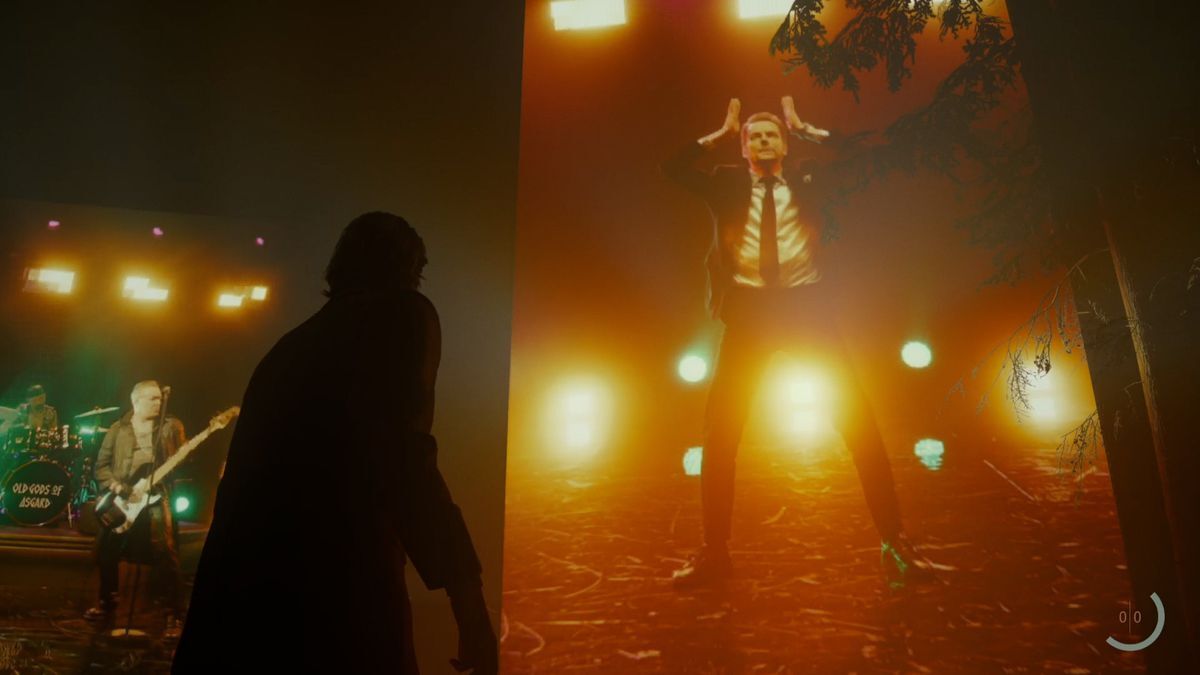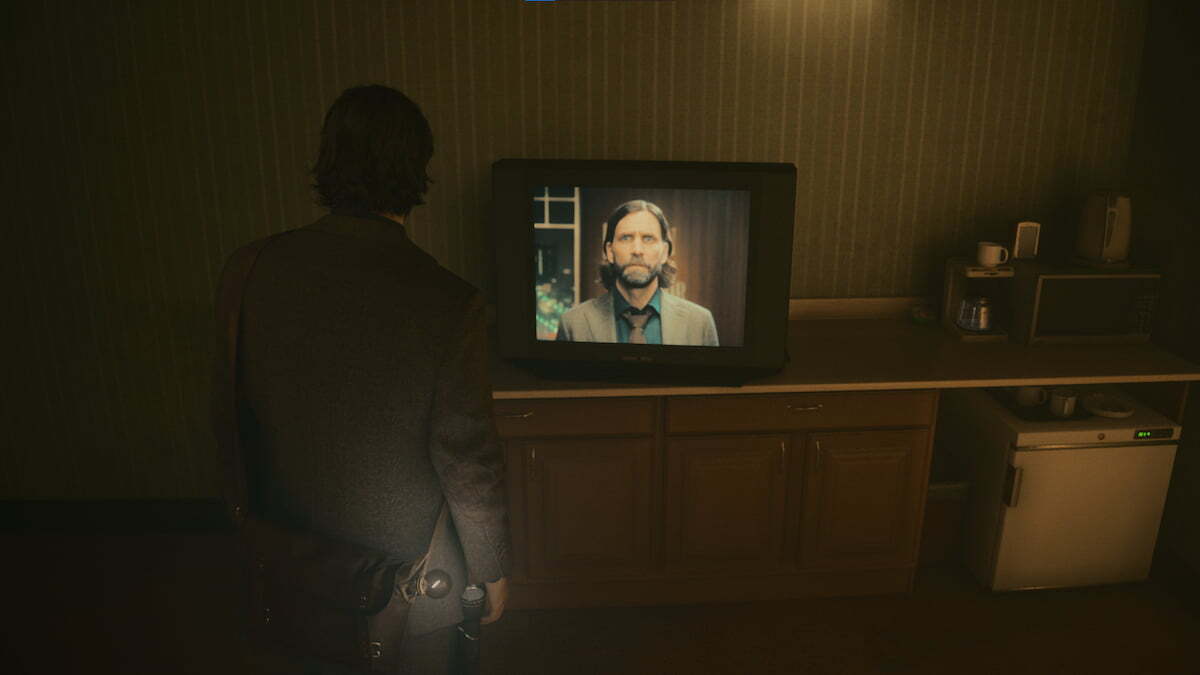Show me the Champion of Light, and I’ll show you the Herald of Darkness.
Alan Wake is stuck in a loop.
In one loop, though, Mr. What follows is the most fun I’ve had in playing a narrative-driven video game in a long time.

Metanarratives–a story about a story, essentially–are nothing new for Alan Wake.
It’s kind of his whole thing.
Here, though, it becomes literal and performative in a way it never has before.

Huge LED screens with live-action footage descend from above.
In front of you, a screen showing Mr.
The song itself is very catchy and just as literal.

Door provides the structure of an interview with his interjections.
It’s personal for both the character and the player.
The screens that tower above you are all at once straightforwardly literal and metatextual as only Remedy really does.

Door, and the Old Gods are joined by a fourth face–Sam Lake.
Sam Lake appearing in this sequence means a lot of things.
It doesn’t make sense forjustAlex Casey to appear in this sequence.
Upon looking into it, he’s pulled back into the song.
Instead, it reminds us of the story-within-a-story loop Wake is trapped in.
We stared into one television to get here, and now we’re looking into another.
Was the place before real?
It cleverly uses these transitions to put us in Wake’s own mindset.
This interactive stage play takes us through concepts like the Clicker and events from the first game.
Throughout all of this, though, there’snevera question that you’re on a set.
It’s all edifice.
On one of the screens, Lake/Casey/Payne beckons you to continue.
After some intense combat, you find another television, and you’re finally out.
That is, until you view one of the many visions littered throughout the game.
The whole thing ends with Alan waking up back on the set of Mr. Wake sits down, exhausted, but clearly impressed.
Who is he impressed with?
With himself, with Mr. Scratch, with Sam Lake?
We often use that term–set piece–to describe big events in games.
It unites so many things about Alan Wake and Remedy games.
Wake’s metanarrative story is on display here, but so is Remedy’s constant experimentation with storytelling.
Max Payne used voiced comic book panels to tell its story.
Alan Wake’s American Nightmare put Ilkka Villi in live-action sets as both Wake and Mr. Scratch.
Quantum Break featured entire television episodes.
She encountered ghostly visions delivered in abstract live-action as she learned about the Federal Bureau of Control’s history.
There’s never a moment where I wondered if Remedy knew what it was doing with this sequence.
Got a news tip or want to contact us directly?